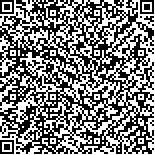王慧灵,曹梦霞,高静,等.热敏灸联合动作观察疗法对痉挛期脑卒中患者腕手部运动功能恢复的影响[J].中华物理医学与康复杂志,2025,47(5):408-412
扫码阅读全文

|
| 热敏灸联合动作观察疗法对痉挛期脑卒中患者腕手部运动功能恢复的影响 |
|
| |
| DOI:10.3760/cma.j.cn421666-20240829-00701 |
| 中文关键词: 脑卒中 腕手部功能障碍 热敏灸 动作观察疗法 |
| 英文关键词: Stroke Wrist dysfunction Hand dysfunction Moxibustion Action observation therapy |
| 基金项目:河南省中药科学研究专项课题(2019JDZX2111;2021JDZY061);河南省科技攻关项目(232102311210);河南省中医学“双一流”创建中医康复科技创新团队(HSRP-DFCTCM-T-09);2023年度河南省中医学“双一流”创建科学研究专项(HSRP-DFCTCM-2023-1-05) |
|
| 摘要点击次数: 1684 |
| 全文下载次数: 1481 |
| 中文摘要: |
| 目的 观察热敏灸联合动作观察疗法对痉挛期脑卒中患者腕手部运动功能恢复的影响。 方法 采用随机数字表法将90例痉挛期脑卒中伴腕手部运动功能障碍患者分为热敏灸组、动作观察组及联合组,每组30例。3组患者均给予常规康复干预,热敏灸组、动作观察组患者在此基础上分别辅以热敏灸治疗或动作观察训练,联合组患者于热敏灸治疗结束后辅以动作观察训练。3组患者均每周治疗6 d,治疗3周为1个疗程,共治疗2个疗程。于治疗前、治疗2个疗程后采用上肢Fugl-Meyer运动功能量表(FMA-UE)腕手功能部分评估3组患者腕手部运动功能恢复情况,同时检测患侧腕屈肌、腕伸肌、指伸肌、拇短展肌表面肌电均方根值(RMS)及积分肌电值(iEMG)。 结果 治疗后3组患者FMA-UE评分均较治疗前明显提高(P<0.05),并且此时联合组FMA-UE评分[(17.2±2.1)分]亦显著优于热敏灸组及动作观察组水平(P<0.05)。治疗后3组患者腕屈肌、腕伸肌、指伸肌、拇短展肌iEMG均较治疗前明显增高(P<0.05),并且联合组上述肌肉iEMG[分别为(54.03±5.20)μV、(50.00±5.03)μV、(38.90±4.19)μV和(40.73±7.16)μV]亦显著高于热敏灸组及动作观察组水平(P<0.05);治疗后3组患者腕屈肌、腕伸肌、指伸肌、拇短展肌RMS均较治疗前明显降低(P<0.05),并且联合组上述肌肉RMS值[分别为(22.06±3.88)μV、(22.23±3.59)μV、(20.66±3.92)μV和(20.73±4.29)μV]亦显著低于热敏灸组及动作观察组水平(P<0.05)。 结论 热敏灸联合动作观察疗法能显著增强痉挛期脑卒中患者腕手部肌肉力量,降低肌张力,改善腕手部运动功能,该中西医结合疗法值得临床推广、应用。 |
| 英文摘要: |
| Objective To observe the effect of combining heat-sensitive moxibustion with action observation therapy in the treatment of spastic wrist and hand dysfunction post-stroke. Methods Ninety stroke survivors with spasmodic wrist and hand dysfunction were randomly assigned to a heat-sensitive moxibustion group, an action observation group, or a combination group, each of 30. In addition to routine rehabilitation treatment, the groups received heat-sensitive moxibustion, action observation therapy or moxibustion followed by action observation therapy in 6 sessions a week over 6 weeks. Surface electromyography signals (iEMG and RMS) were recorded from the affected wrist and hand muscles before and after the treatment. All of the participants were also assessed using the Fugl-Meyer motor assessment for the upper extremities (FMA-UE). Results After treatment, a significant improvement was observed in the average FMA-UE values, with that of the combination group (17.2±2.1) significantly higher than those of the other two groups. The average iEMG of the wrist flexors and extensors, the extensors of the fingers, and abductor pollicis brevis had increased significantly, with the combination group′s averages significantly higher than those of the other two groups. The average RMS values of those muscles had decreased significantly after the treatment, with those of the combination group significantly lower than the others. Conclusions Combining heat-sensitive moxibustion and action observation therapy can significantly reduce muscle tension, and promote strength and better functioning of spastic wrist and hand muscles after a stroke. The combination is worthy of clinical application and promotion. |
|
查看全文
查看/发表评论 下载PDF阅读器 |
| 关闭 |